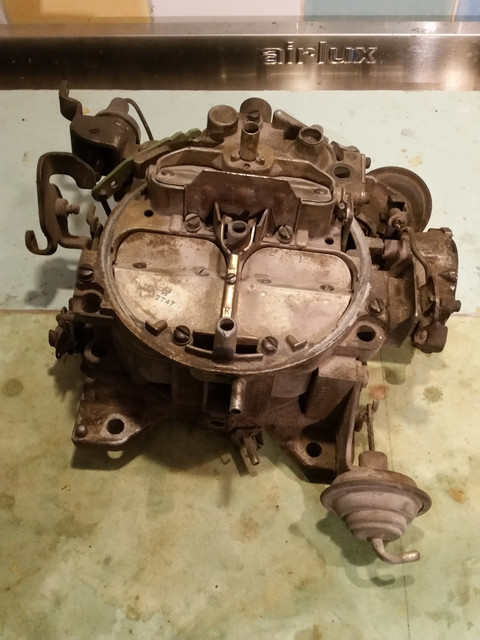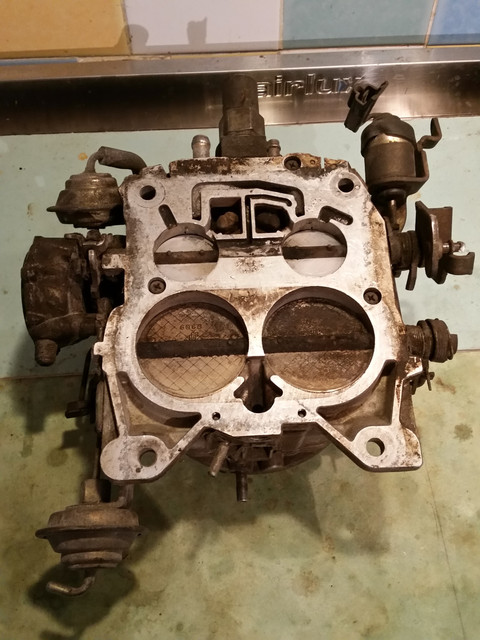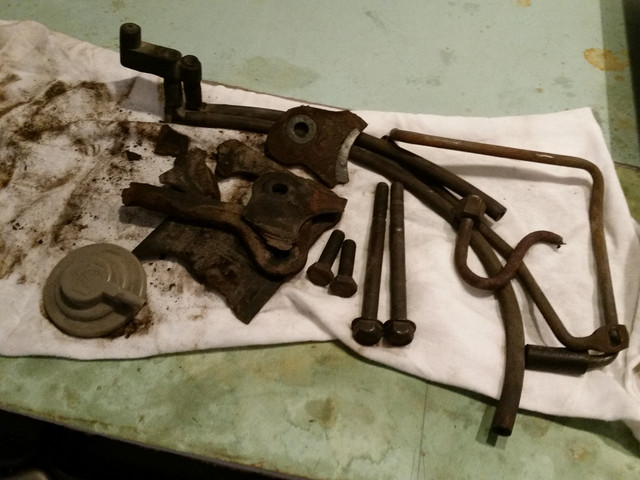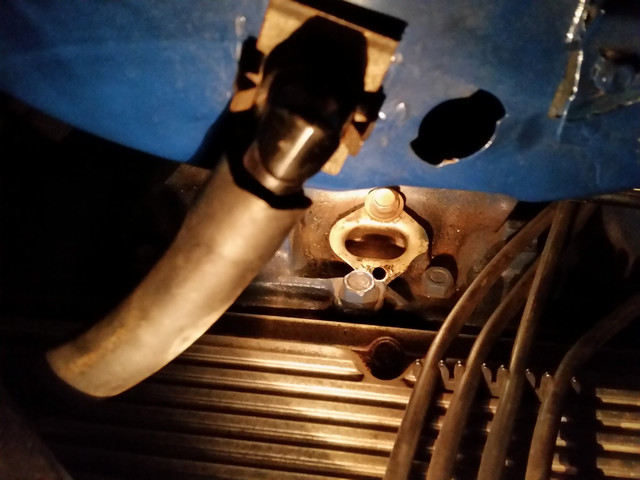mustangandy
Well-known member
- Joined
- Sep 5, 2018
- Messages
- 126
- Reaction score
- 1
- Location
- France
- My Car
- 1971 Cobra Jet 429 Ram Air C6 auto 3.50 traction loc
[url=https://ibb.co/Wtx4kTW][img]https://i.ibb.co/dgWwPh0/mine1.jpg[/img][/url]
My 429 CJ (ram air, auto, non AC) has a holley in place of the rochester as the PO couldn't get it to run properly. I've now, thankfully, received the original carb. It's been boxed up for the last 3 years, stored dry, though there seems to be a fair bit of rust and gunk on it. If it was anything like it is now when it was pulled then perhaps that's why it didn't really work.
Does it look like all the original parts are with it?
I guess it's going to need a full strip, clean and rebuild. I've got the 'rebuild and modify Rochester quadrajet carburettors' book by Cliff Ruggles on the way, need to get a rebuild kit of course and then my plan was to just follow what it says. Does this sound sensible? I've not rebuilt a carb before but can take whatever time it will take, there's no rush. I've come across a few video's on you tube as well that look like they'll be helpful too.
If anyone has any other tips, tricks or suggestions they would be most gratefully taken.
Many thanks



Does it look like all the original parts are with it?
I guess it's going to need a full strip, clean and rebuild. I've got the 'rebuild and modify Rochester quadrajet carburettors' book by Cliff Ruggles on the way, need to get a rebuild kit of course and then my plan was to just follow what it says. Does this sound sensible? I've not rebuilt a carb before but can take whatever time it will take, there's no rush. I've come across a few video's on you tube as well that look like they'll be helpful too.
If anyone has any other tips, tricks or suggestions they would be most gratefully taken.
Many thanks










